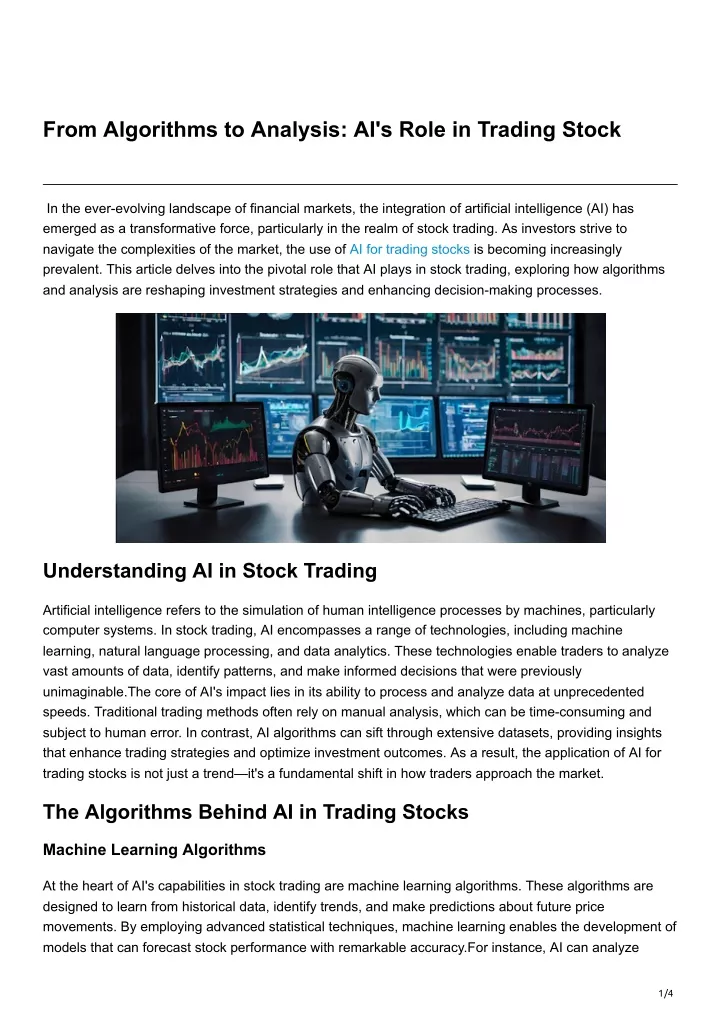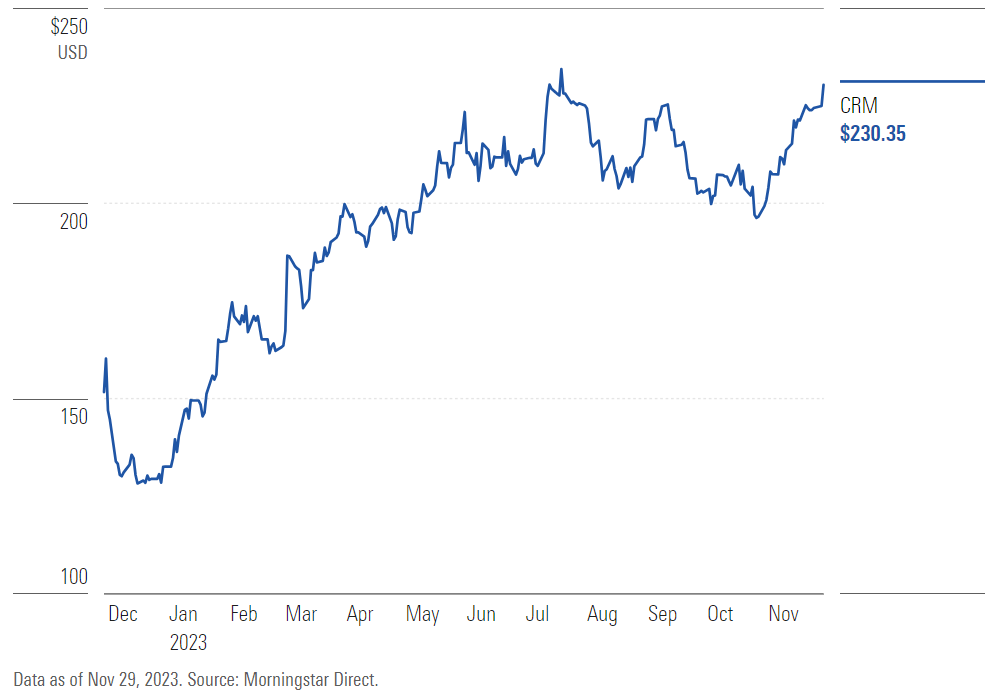Assessing the cost and pricing of AI software for predicting and analyzing stocks is essential to ensure that you get value in exchange for your money, while avoiding hidden fees or unexpected costs. Pricing structures can vary greatly and it is essential to understand what you're getting for the money. Below are the top ten ways to evaluate the pricing and costs of these platforms.
1. Learn Pricing Model
Subscription based: Verify whether the service charges per month or annually, and also the features that each tier offers.
Pay-per-use: Check if the platform charges depending on the amount of usage (e.g. the number of trades, data requests or forecasts).
Freemium model: Check if there is a free version that has limited features and a paid version for premium features.
2. Compare Pricing Tiers
Compare features across each pricing level (e.g. basic, professional).
Scalability - Make sure your pricing tiers match your needs.
Upgrade flexibility: Find out whether you are able to easily upgrade or downgrade your plan as your requirements change.
3. Evaluate Hidden Costs
Fees for data. Check if the platform is charging a fee for accessing premium data.
Brokerage Fees: Find out the extent to which your platform charges fees for integration or trade execution.
API usage. Determine whether there are additional costs associated with API access or high-frequency usage.
4. Check out free demos and trial versions
Trial period: Try platforms that give you a no-cost trial or demo so that you can try their features.
Limitations of the trial Check if the trial includes all features or if there are limitations in terms of capabilities.
There is no commitment option If you aren't satisfied with the platform, you can unsubscribe at any time without cost.
5. Check out the latest discounts and special offers
Discounts on annual subscriptions Comparing the monthly plan to the annual plan.
Referral programs - Find out if there are any discounts or credits available for referring new users.
Pricing for institutions: If you are a part of an organization that is larger than you, ask about pricing for bulk orders or institutions.
6. Calculate Return on Investment
Cost vs. value - Determine whether the capabilities, features, and predictions are worth it. Are you able to save time or make better choices when trading?
Performance track record - Check the platform's success rate or user feedback for an indication of its potential ROI.
Alternative costs - Compare the platform's cost with the potential cost in the event that you do not use it (e.g. missed opportunity, manual analysis time).
7. Review, Cancellation, and Refund Policies
Cancellation policy: Make sure that you have the ability to cancel the subscription without penalty, or with no hidden costs.
Refund Policy: Find out if your platform allows the amount back if the subscriptions is not used.
Auto-renewal (automatic renewal): Find out whether you need to renew your subscription in a timely manner. Also, find out how you can opt-out.
8. Pricing should be transparent
Clear pricing page: Ensure the platform provides transparent and clear pricing page, with no fees hidden.
Customer support: Contact customer support to discuss any pricing questions or charges.
Terms of service: Read the conditions of service to know any commitments to stay or penalties that are long-term.
9. Compare your competitors
Check out the features and prices on different platforms to get the most value.
Feedback from users: Learn what others think of the platform and determine if it is worth the cost.
Market positioning: Determine if it is priced at a high-end, mid-range, or low-cost choice, and if that aligns with what you expect.
10. Take into consideration the long-term cost
Price hikes: Check out the past history of the platform and note how often it has raised prices.
Additions to your plan Consider if you require an upgrade or if the new features are already included in your plan.
Costs of scaling: Make sure the platform's price remains affordable when your trading or data needs grow.
Bonus Tips
Test different platforms. Test the effectiveness and performance of different platforms by evaluating them during free trials.
Negotiate prices: If you're a high-volume user or part of an institution, inquire about discounts or custom pricing.
Consider checking for educational resources. A lot of platforms offer free educational materials or tools which could be an excellent addition to their core features.
Utilize these suggestions and you'll be able to evaluate the price, cost, and features of AI stock trading platforms. A well-priced platform should provide the right balance between the affordability and features, allowing you to maximize your trading performance. Read the most popular options ai url for blog examples including market ai, AI stock trading app, AI stock market, AI stock trading bot free, ai trading tools, best ai for trading, ai for investing, investing ai, best ai trading app, trading with ai and more.

Top 10 Ways To Assess The Accuracy Of Ai Trading Platforms That Predict/Analyze Stock Prices
Transparency can be a key aspect when the evaluation of AI trading and stock predictions platforms. Transparency is crucial since it lets users be confident in the platform, comprehend the reasoning behind its decisions and confirm the accuracy. Here are 10 best tips to assess the transparency of these platforms:
1. AI Models - A Simple explanation
TIP: Make sure the website provides a comprehensive description of the AI algorithms that are used to predict the future.
What's the reason? Users can better assess the reliability and limitations of a technology by knowing the technology behind it.
2. Sources of Data Disclosure
Tips: Check if the platform discloses the sources of data it relies on (e.g. historical stock data, news, social media).
The platform will use reliable and complete data If you are familiar with the sources.
3. Performance Metrics, Backtesting, and Results
Tips: Make sure you look for transparent reporting on the performance of your business, like accuracy rates and ROI, in addition to testing results back to back.
How do users determine the effectiveness of an application by examining its past performance.
4. Actual-Time Updates and Notifications
Tips - Make sure to check whether there are any real-time updates, notifications, and trades about the platform.
Why is this? Real-time transparency enables users to be informed of the critical actions.
5. Limitations and Open Communication
TIP: Find out if the platform is openly discussing the limitations and risks of its trading strategies.
Understanding the limitations of an item builds trust, which helps users make better decisions.
6. Data in Raw Data to Users
Tips: Find out if the AI model is able to gain access to raw data as well as intermediate results or both.
The reason: Users can conduct an analysis on their own using raw data, and then verify their conclusions.
7. Transparency and transparency in the cost of fees and expenses
Check that the platform explains every cost that are due, including subscription fees as well as any additional costs that are not disclosed.
Transparent pricing lowers the chance of unexpected expenses and builds trust.
8. Regular Reporting and Audits
Find out if the platform produces regular reports and undergoes third party audits in order to confirm the effectiveness of its operation.
Why Independent Verification is important: It increases credibility, and also ensures accountability.
9. The ability to explain predictions
Tip Check to determine if there is any explanation of how the platform makes specific predictions and suggestions (e.g. features with priority and decision trees).
Why: Explainability helps you understand AI-driven decisions.
10. User Feedback and Support Channels
Tips: Find out whether there are clear channels for users to share their feedback and get support. Also, consider whether the company is transparent in its response to concerns that users have raised.
Why: Responsive Communication demonstrates an commitment to transparency, and customer satisfaction.
Bonus Tip: Regulatory Compliance
Be sure that the platform follows to and is open regarding its compliance with financial regulations. This adds an additional layer of confidence for the platform.
You can evaluate these elements to decide if an AI stock trading and prediction platform is a transparent and unbiased. Then, you can make an informed decision. This will help you to increase your confidence and faith in the abilities of the platform. View the recommended official statement on AI stock price prediction for website advice including best ai trading platform, best AI stock prediction, stock predictor, free AI stock picker, best ai for stock trading, AI stock analysis, ai options trading, best stock prediction website, AI stock predictions, best ai for stock trading and more.
